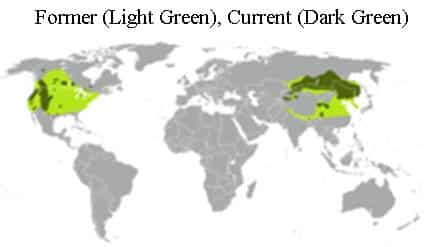Wapiti/Canadian Elk (Cervus canadensis)
Habitat:
Canadian Elk/Wapiti can be found in coastal forests, alpine meadows, dry desert valleys, and snowy mountain ridges; North America: Mountains from north-central British Columbia to South Western United States.
Description:
Wapiti are light brown with dark faces, necks and legs. They have a creamy-coloured rump patch with stubby tail. A bull can have wide branching antlers up to 1.2m in width and weigh up to 18kg. A bull can weigh up to 180-450kg with females weighing between 120-300kg and lack antlers.
Status:
Least Concern
Interesting facts:
- Canadian Elk are also known as Wapiti and are the second largest species of deer in the world, and one of the largest land mammals in North America and Eastern Asia.
- In parts of Asia, Wapiti’s antlers and their velvet are used in traditional medicines.
- Wapiti are hunted as a game species; the meat is leaner and higher in protein than beef or chicken.
- A male Wapiti’s antlers can grow as long as 1.2m and weigh as much as 18kg and are shed each year.
- An Elk/Wapiti will show discomfort by grinding its teeth, curling its lower lip back, or laying its ears back against its head.
- Lifespan: Approximately 20 years.
- Diet: Grass, seedlings, twigs, berries, bark, mushrooms, cattails and wildflowers.
- Reproduction: Female Elk/Wapiti have a short cycle of 1 to 2 days with a gestation period of 240 to 262 days normally resulting in 1 or very rarely 2 calves being born.
- During mating season males engage in antler wrestling and ‘bugling’ a loud series of noises which establishes dominance over other males and attracts females.
- Predators: Bears, Mountain Lions, Wolves, Coyotes and Humans.

Wapiti/Canadian Elk Population Distribution Map





